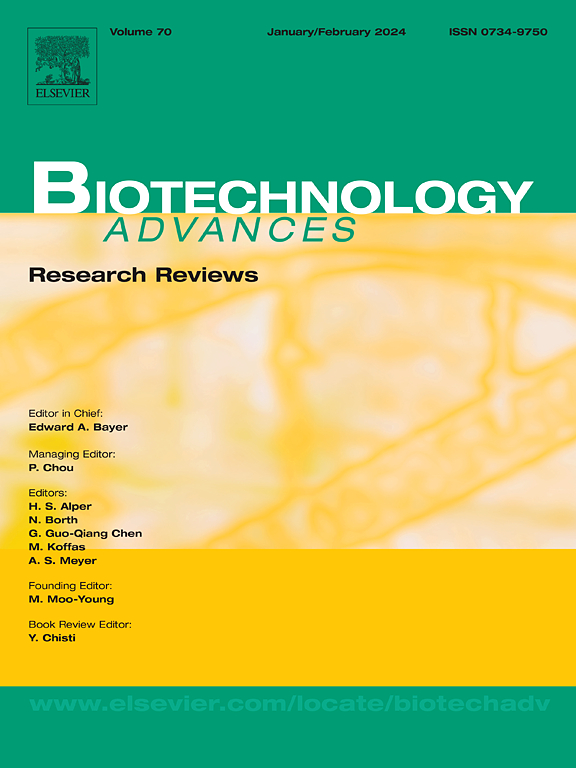生物信息学协助构建生物合成基因簇与真菌次生代谢物之间的联系。
IF 12.1
1区 工程技术
Q1 BIOTECHNOLOGY & APPLIED MICROBIOLOGY
引用次数: 0
摘要
真菌次生代谢物被认为是药物发现的重要资源。尽管人们采用了各种方法来促进发现新的真菌次生代谢物,但从真菌中鉴定新的次生代谢物的趋势不可避免地放缓。在实验室条件下,大多数储存次生代谢物信息的生物合成基因簇保持不活性。因此,建立生物合成基因簇与次生代谢物之间的联系将有助于理解次生代谢物生物合成背后的遗传逻辑,并缓解目前在发现新的天然产物方面的挑战。生物信息学方法因其在数据挖掘和分析方面的强大能力而备受关注,在各个方面发挥着至关重要的作用。因此,我们总结了自2016年以来利用生物信息学方法建立真菌生物合成基因簇与次生代谢物之间联系的成功案例,重点关注它们的生物合成基因簇和相关的次生代谢物,目的是帮助天然产物发现领域。本文章由计算机程序翻译,如有差异,请以英文原文为准。
Bioinformatics assisted construction of the link between biosynthetic gene clusters and secondary metabolites in fungi
Fungal secondary metabolites are considered as important resources for drug discovery. Despite various methods being employed to facilitate the discovery of new fungal secondary metabolites, the trend of identifying novel secondary metabolites from fungi is inevitably slowing down. Under laboratory conditions, the majority of biosynthetic gene clusters, which store information for secondary metabolites, remain inactive. Therefore, establishing the link between biosynthetic gene clusters and secondary metabolites would contribute to understanding the genetic logic underlying secondary metabolite biosynthesis and alleviating the current challenges in discovering novel natural products. Bioinformatics methods have garnered significant attention due to their powerful capabilities in data mining and analysis, playing a crucial role in various aspects. Thus, we have summarized successful cases since 2016 in which bioinformatics methods were utilized to establish the link between fungal biosynthetic gene clusters and secondary metabolites, focusing on their biosynthetic gene clusters and associated secondary metabolites, with the goal of aiding the field of natural product discovery.
求助全文
通过发布文献求助,成功后即可免费获取论文全文。
去求助
来源期刊

Biotechnology advances
工程技术-生物工程与应用微生物
CiteScore
25.50
自引率
2.50%
发文量
167
审稿时长
37 days
期刊介绍:
Biotechnology Advances is a comprehensive review journal that covers all aspects of the multidisciplinary field of biotechnology. The journal focuses on biotechnology principles and their applications in various industries, agriculture, medicine, environmental concerns, and regulatory issues. It publishes authoritative articles that highlight current developments and future trends in the field of biotechnology. The journal invites submissions of manuscripts that are relevant and appropriate. It targets a wide audience, including scientists, engineers, students, instructors, researchers, practitioners, managers, governments, and other stakeholders in the field. Additionally, special issues are published based on selected presentations from recent relevant conferences in collaboration with the organizations hosting those conferences.
 求助内容:
求助内容: 应助结果提醒方式:
应助结果提醒方式:


